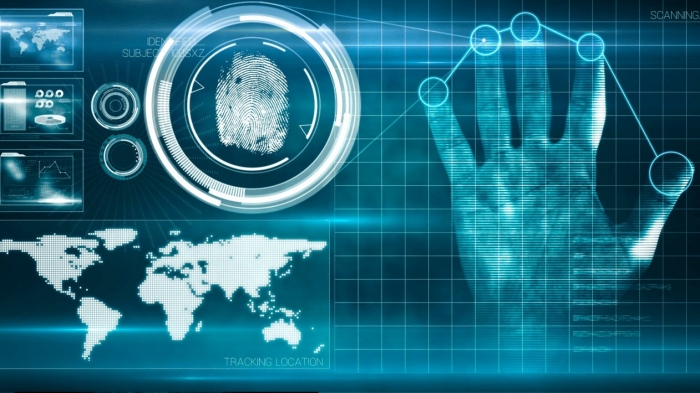I
n 2019, the World Bank estimated that some 1 billion people do not have, or cannot access, an official identity document such as a passport. These people cannot prove their identity, open a bank account, start a job, or access state services. Millions more are believed to have documents that cannot be reliably authenticated, resulting in systematic exclusion from education, healthcare, politics, and society in general.
There are also issues with fraud, counterfeit documents, and identity theft. Up to 33% of the population have experienced identity fraud of some kind, millions more fall victim to fraud or perpetuate it, and billions of fake IDs circulate every year. This poses huge issues for online companies such as eCommerce sites, online gambling sites, forex trading platforms, exchanges, and payment processors.
Not only is it a legal requirement to verify the identity of clients and customers in various fields, but it is a standard best practice for compliance. Furthermore, protecting yourself, and your customers from illicit and illegal activities will increase your compliance and reputation.
What are Digital ID systems?
A digital ID system is a form of personal identification that is digital and not in a paper format such as a passport or driving license. It is used and authenticated via digital channels and can be issued by national or local government, or by a private entity. Typically, digital ID systems use various kinds of technology such as biometric data, PINs, security tokens, passwords, or smart devices.
To be considered a ‘good’ and viable way of authenticating identity, the system should meet the following criteria:
- Protects privacy: The system should contain safeguards that ensure optimum security and privacy while also allowing the user to have control over their data, who has access to it, and who has accessed it. They should also be able to delete it when they choose.
- Established with consent: The user must have given their information such as biometric data with full and informed consent. This includes how it is captured, how it’s stored, and when and how it will be used.
- Totally unique: The individual must only have one identity in the system and each set of digital data must correspond to only one person.
- Verified to a high degree of assurance: It must meet government and private institution standards of security and verification and be suitable for accessing education, bank accounts, and starting a job. The standards must be the same each time the digital ID is verified and authenticated. This can be done through inter alia, passwords, QR codes, and biometrics.
Digital ID systems have the power to remove the need for physical passports and identity documents, thereby reducing fraud, identity theft, and counterfeiting issues.
Benefits of digital identity systems
The benefits of companies using digital identity systems are vast. Firstly, the integration of such systems can greatly reduce costs and improve efficiency. Authenticating user’s identity can be done quickly, easily, and cost-effectively without the requirement of intervention by a human. Everything is recorded digitally and cannot be circumvented which makes matters of compliance and auditing much easier. Furthermore, this frees up the time of customer service staff, giving them more opportunity to deal with other matters. It also makes the process quicker for users meaning accounts can be opened and services provided in much less time than before.
Another key benefit is that of enhanced security. Access to digital identity systems includes rigorous accreditation requirements set at the peak of international security standards. In other words, personal data is stored in a highly secure manner. Customers can also be secure in the knowledge that their data cannot be reused by someone else, counterfeited, or fraudulently replicated as it can with other forms of ID. It’s also beneficial that passwords, pins, and knowledge-based authentication are removed, as these are not secure.
Digital ID systems are also highly accurate. For example, biometric data such as fingerprints, irises, and facial features are unique to the individual and cannot be replicated. There are no errors such as inputting mistakes, no room for corruptive behaviour, and no issues due to incompetence.
In summary, the use of digital identity authentication is beneficial for the following reasons:
- It can facilitate customer identification easily, accurate, and with a lower cost
- It supports ongoing due diligence and scrutiny of transactions throughout the business relationship
- It can facilitate other “customer due diligence” and “know your customer” measures
- Assist with transaction monitoring in terms of suspicious transactions, general risk management, and anti-fraud measures
- Provides better security for consumer and operator
How can Digital ID systems prevent fraud?
Banking, payments, and all kinds of financial transactions are becoming increasingly digitized. With this comes a heightened risk of all kinds of fraud. Cybercriminals are getting smarter and with so much cash changing hands via the internet, operators and payment providers need to wise up and work to mitigate the frequency of fraud. Therefore, the correct implementation of digital ID systems can create better user experiences without forgoing robust fraud prevention features.
Digital authentication technology can combine greater security with a smooth, optimum user experience. Ideally, consumers should have a choice of ways to digitally verify their identity and they should be adopted widely.
By linking biometrics and other methods of digital verification to one identity, the ability to carry out fraud is automatically reduced. It is nigh on impossible to replicate biometrics or other methods of authentication. Other methods such as phone calls to a certain device or number, device location and identity, and behavioural biometrics are also very difficult to fake, meaning increased security all round.
The integration of these digital checks and balances makes it almost impossible for fraudsters to steal someone’s identity, impersonate someone, or create a “fake” persona. For example, someone wanting to open a bank account online could scan their identity document, take a selfie, scan their fingerprint and iris, and let the technology do the work in verifying it and authenticating that they are whom they say they are. Once this has been done, those details will be tied to that account and cannot be used by anyone else, and the account cannot be accessed by someone with differing features.
In online gambling, the use of such technology could help drastically reduce money laundering as there will be no possibility to set up fake accounts or accounts with stolen identities. This will help operators crackdown on the global issue, preventing the funding of terrorism, drug trafficking, and other illicit markets.
And as for those that are excluded from participating in elections, opening bank accounts, or gambling online, digital identity systems present a breakthrough way of authenticating who someone is and providing them with a verified identity.
Fast Offshore has been working within the payments and compliance industry for over 22 years. To find out more about incorporating digital identity systems into your eCommerce, online gambling, forex, or other business, contact us today.



